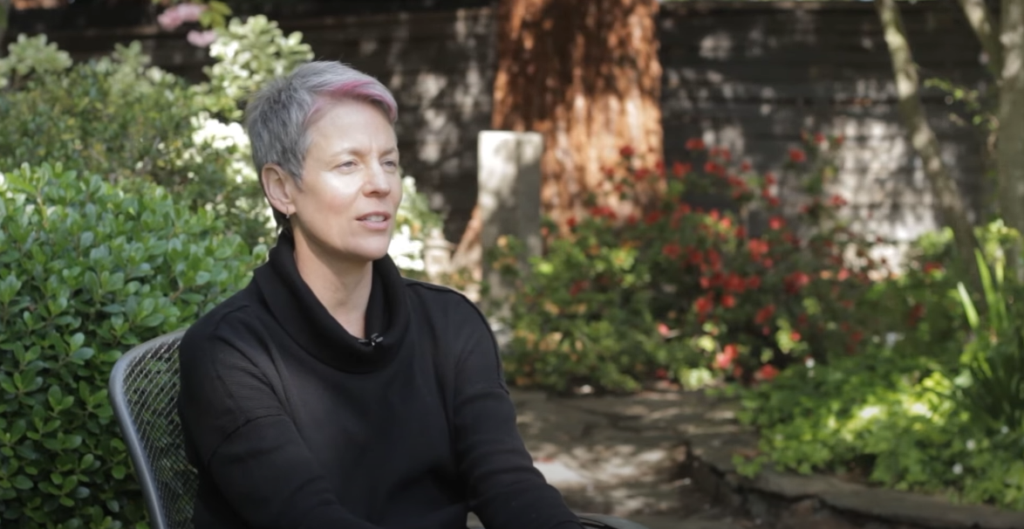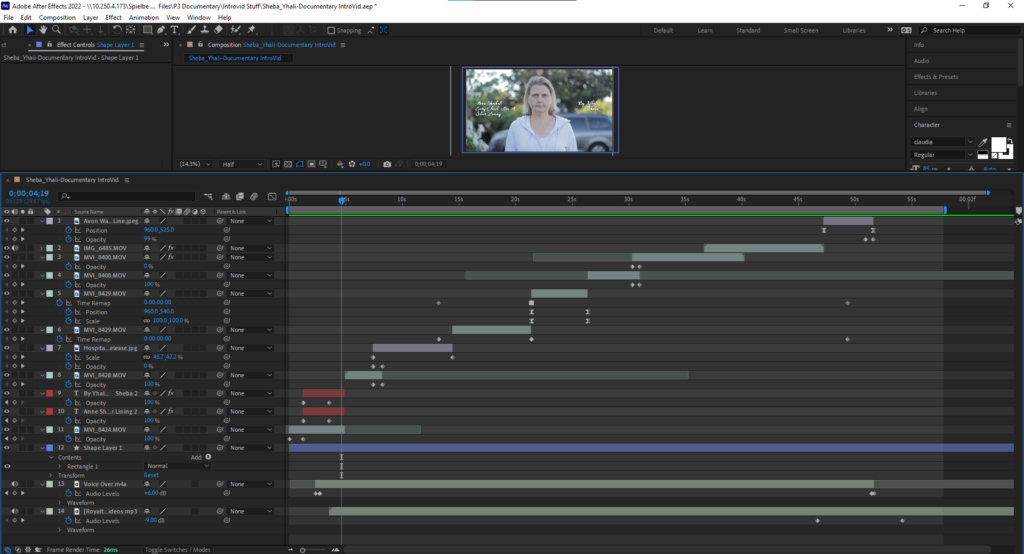
Click above to watch the intro video to our documentary. This video, which was created in Adobe After Effects, nicely summarizes the content that you are going to watch in the real documentary.
Introduction
“How do you creatively and truthfully portray a significant person, group, place, idea, or issue in the community?”
Everyone has a story, and for the Junior Documentary Project, we were challenged to cast aside the narrative structure and take our skills into the real world. Students had to reach out to their communities to find and capture the life of a person, group, place, idea, or issue, and develop an understanding of what makes them unique/significant. In English, we created a research-based paper using interviews and secondary sources that captured the life of the individual from a unique perspective. In Digital Media, we took things into the digital world and created a magazine centered around our paper. Lastly, in film, we created a full-blown documentary that captures the story of the individual with self-captured interviews. This extensive unit had an emphasis on narrative-style journalism.
Me and my partner, Eric Shachal, had gone into the documentary blindly; when we first decided to partner up, we weren’t certain of what we wanted to do and who we wanted to do the project about. After scouring our community, we decided to do the documentary about Eric’s mom, Anne Shachal, because of her unique outlook on life and personal experiences. We hoped to create a documentary that sheds light on her story and explains her battle with breast cancer, an illness that has deeply affected both her and her family during the last decade.
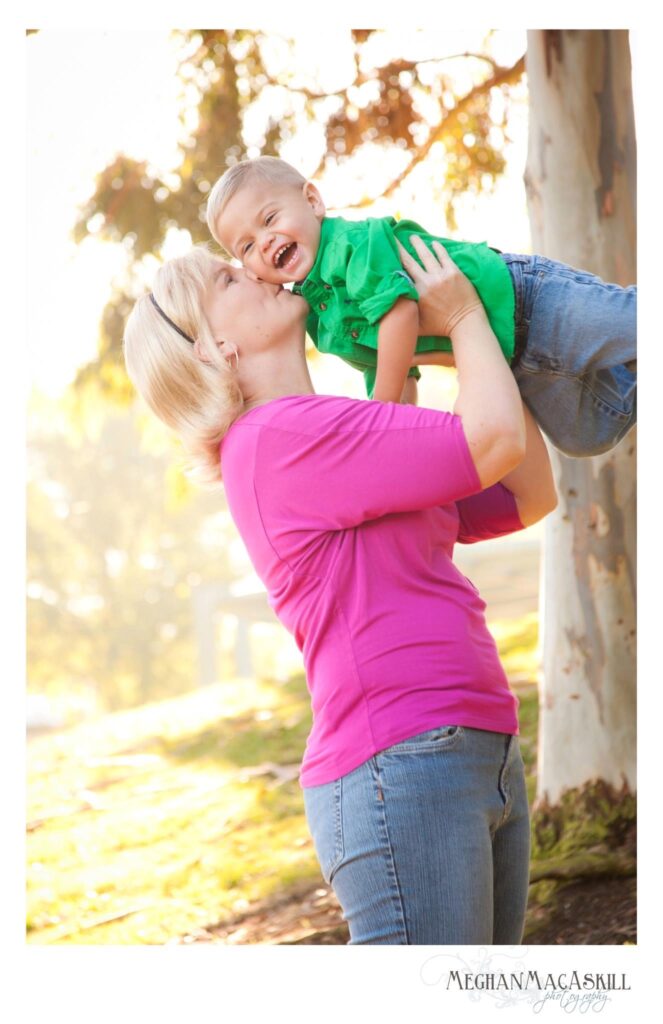
Me and my partner, Eric Shachal, had gone into the documentary blindly; when we first decided to partner up, we weren’t certain of what we wanted to do and who we wanted to do the project about. After scouring our community, we decided to do the documentary about Eric’s mom, Anne Shachal, because of her unique outlook on life and personal experiences. We hoped to create a documentary that sheds light on her story and explains her battle with breast cancer, an illness that has deeply affected both her and her family during the last decade.
Completing the documentary project helped me and Eric understand how to make connections and outsource people in our community, as well as helping us learn the importance of preparation in the film industry. Furthermore, the interviewing process helped sharpen our cinematography and communication skills. For me personally, the documentary project was really eye-opening; when you spend so much time documenting an individual you really get to develop an understanding of what makes them who they are. I was so blessed to have the opportunity to work with Anne, as doing so changed my perspective on life and helped me grasp that everyone has a story, and everyone has something going on in the background of their life that we may not realize.
Profile Article
A big part of the documentary project was creating the research paper. When I first started my writing, I wasn’t sure how I wanted to structure it, but as I became more familiar with Anne and her story, I decided to approach the paper from a different angle than the film. My profile article, “Anne Shachal: Making the Room to Compromise for the Immunocompromised” focuses on Anne’s experience with being immunocompromised as a byproduct of her cancer treatment. The article opens up about her history with cancer, how it lead to her having a weakened immune system, and what impact it had on her life. In the article, I used a variety of personal interviews and secondary sources to help explain why it is our responsibility to be mindful of immunocompromised individuals, and what we can do to make their lives less challenging.
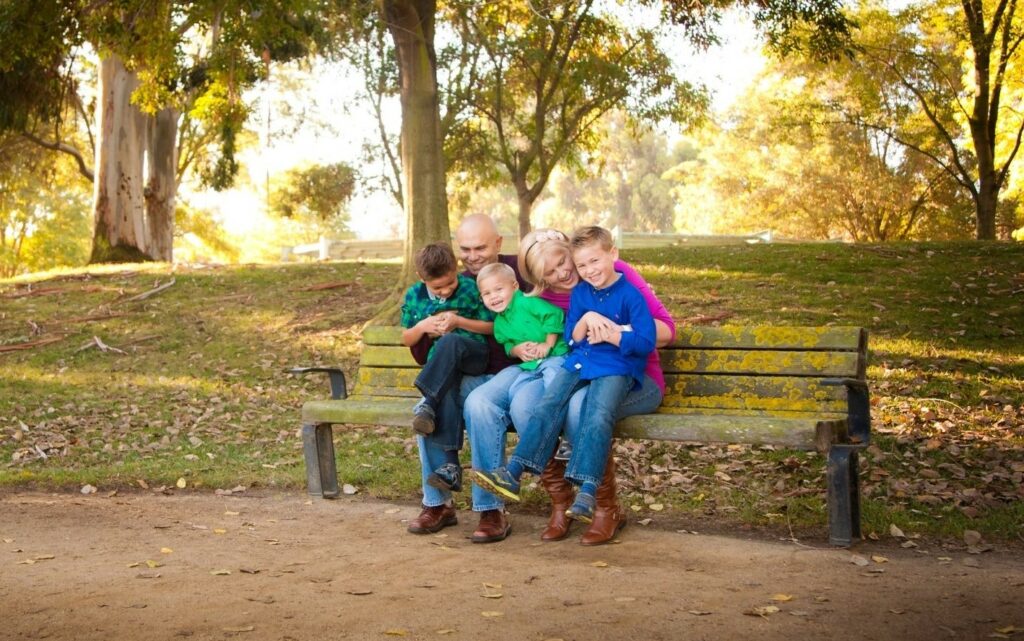
Documentary
Prior to making our documentaries, we spent over a month developing our understanding of the genre in film class. In class, we watched countless examples in order to learn about the different styles of documentaries and shape our understanding of what makes one interesting. We also had several lectures where we learned how to use our audio recorders, properly set up/film an interview, and get the most out of an interviewee.
After understanding the basics, we put our skills to the test and started our first assignment, creating a Mockumentary. The mockumentary was a playful assignment where students were challenged to make a fake documentary in order to practice recording interviews. For this assignment, I partnered up with fellow students Eric Shachal Jack Dees, and Isaac Lui. The three of us sought to create a humorous film that both followed the documentary standards and was entertaining. After two days of filming and one day of post-production editing, we had our finished film, and let’s just say, it speaks sings for itself.
The mockumentary gave us a platform to perfect our craft, and once we had finished the project, we were ready to begin the real documentary. After Anne had agreed to let us document her journey with cancer, we began the interviewing process, which had proven to be the most difficult phase in making the film. Our initial interview with Anne yielded good content, but our lack of professionalism caused us to push off the interview until the evening, which resulted in the footage being grainy and discolored.

The first interview definitely taught us a devastating but valuable lesson on the importance of professionalism in the industry; making sure we schedule in advanced, meeting our scheduled times, setting up the cameras thoroughly before shooting, and being considerate of our interviewee. In the rest of our interviews moving forward, we definitely tried to employ this professionalism as best we could, but we still had a couple of setbacks.
For our second and third interviews, we decided to interview Oren Shachal, Anne’s husband, and Eilish Bryn, a close friend of Anne’s. We thought that these two individuals would provide unique insights into Anne’s life and what her battle with cancer was like from an outside perspective. This part of the interviewing process also proved to be very challenging as not only did Eric leave on a family vacation, but both of us got sick after he came back, causing the interviews to get pushed back multiple times. But once we were finally able to film, our interviews with both Oren and Eilish were very successful and gave us confidence moving forward with the film.
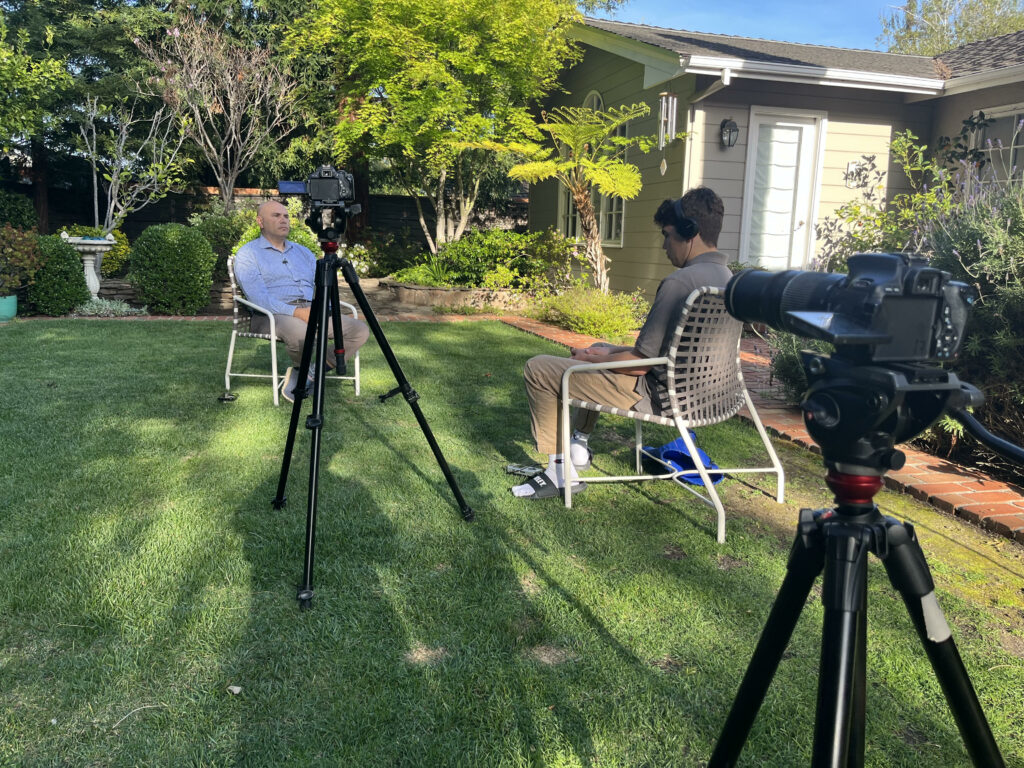
For our last interview, we decided to talk to Anne once again, so that we could get more content for the profile article, and to make up for the poorly shot footage from our first interview. After proper preparation and a lot of coordination, it’s safe to say that the second interview came out much better than the first.

After we had finally captured all our interviews, we had started to film b-roll so that we would have visual content for the film. We spent a day filming around Anne’s house, capturing memorabilia from her battle with cancer; we also looked through countless photos that documented her journey. We then decided to accompany Anne to her son’s baseball game and record the experience because we wanted to put an emphasis on her love for her children. This ended up being the nicest footage that we shot, and it contributed greatly to making the documentary come together.
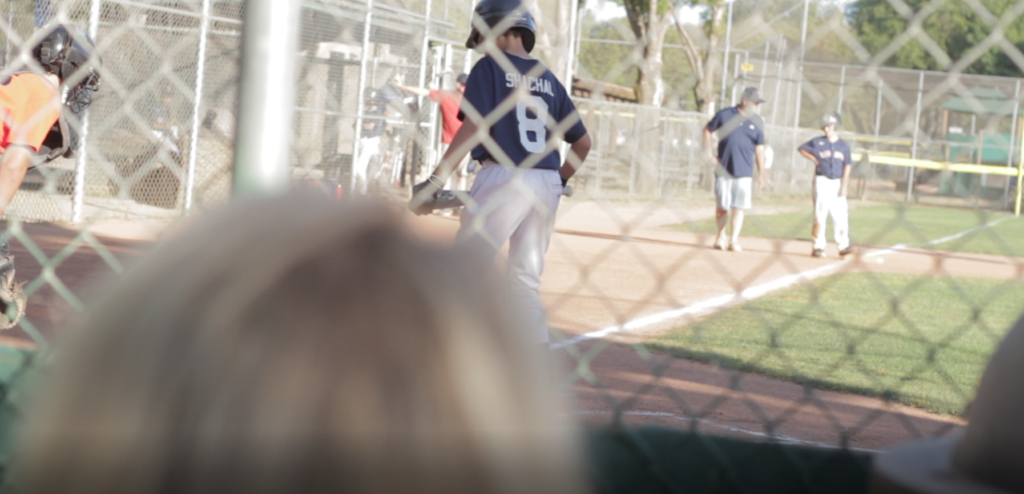
After over two months of filming, with many setbacks and shortcomings (but also moments for growth), we were finally ready for post-production. Eric and I spent over two weeks editing the film together, which proved to be a very tedious process. We spent the first week analyzing our four interview transcripts, selecting the most important snippets, sectioning them into paragraphs, and placing them on a document so that we had an organized layout of our documentary.

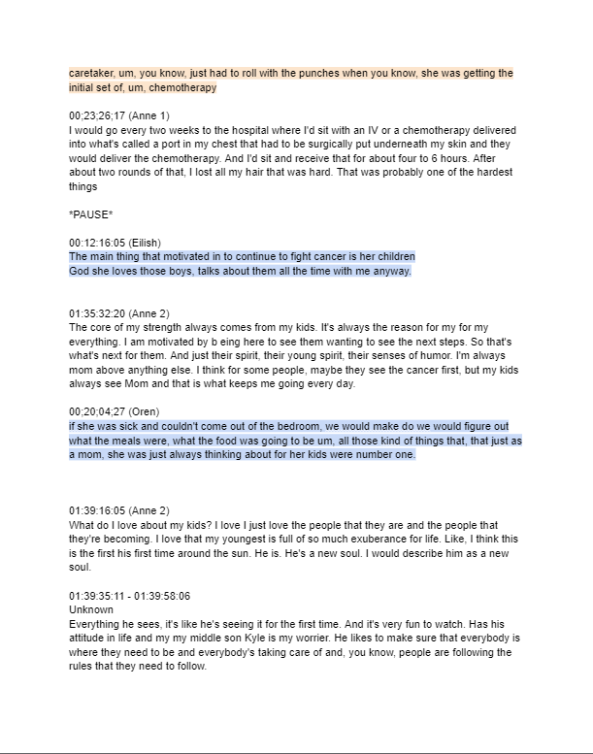
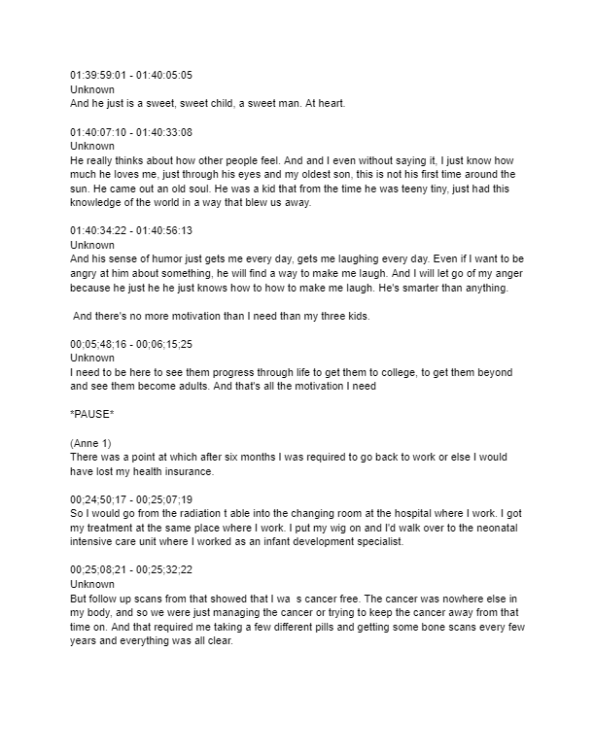
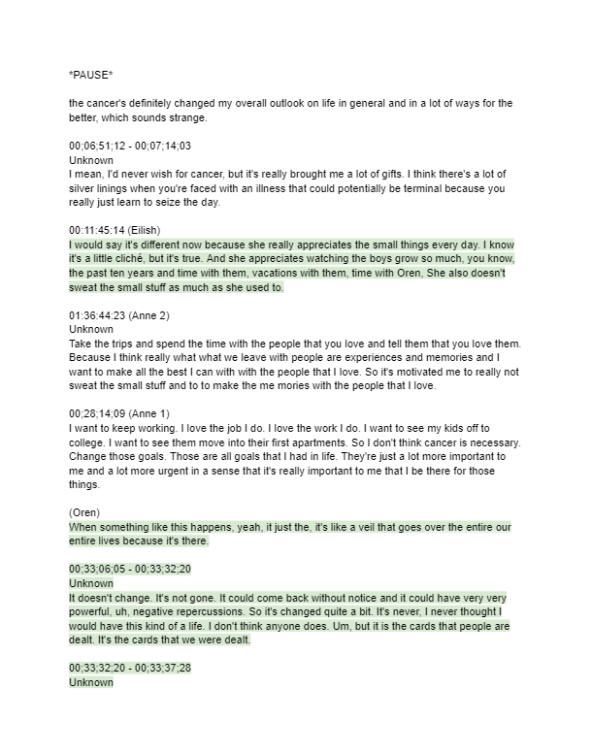

After organizing the layout of our film and creating the initial rough cut, we consulted Mr. Taylor for critics. We made necessary changes to the pacing of the interviews, cutting irrelevant content, and adding in the b-roll. Finally, after months of work, our documentary, “Anne Shachal: Every Cloud Has A Silver Lining” was complete.
Magazine Article
To conclude the documentary project, we took the research papers that we made in English and took them to our digital media class to create a magazine article. Using Adobe Indesign, we created a well-designed six-page article that featured our research papers. These articles were then printed into a real, professional, magazine that contains multiple unique profiles.
Interviewee’s
None of the documentary projects would have been possible if it weren’t for Anne Shachal. Anne is an infant development specialist who works in a neonatal intensive care unit, meaning that she nurtures babies who have birth defects. Anne is a hard worker, and above all, a caretaker, not at work, but at home with her family. I was lucky to have the opportunity to work with Anne, as her battle is truly an inspiration to us all.
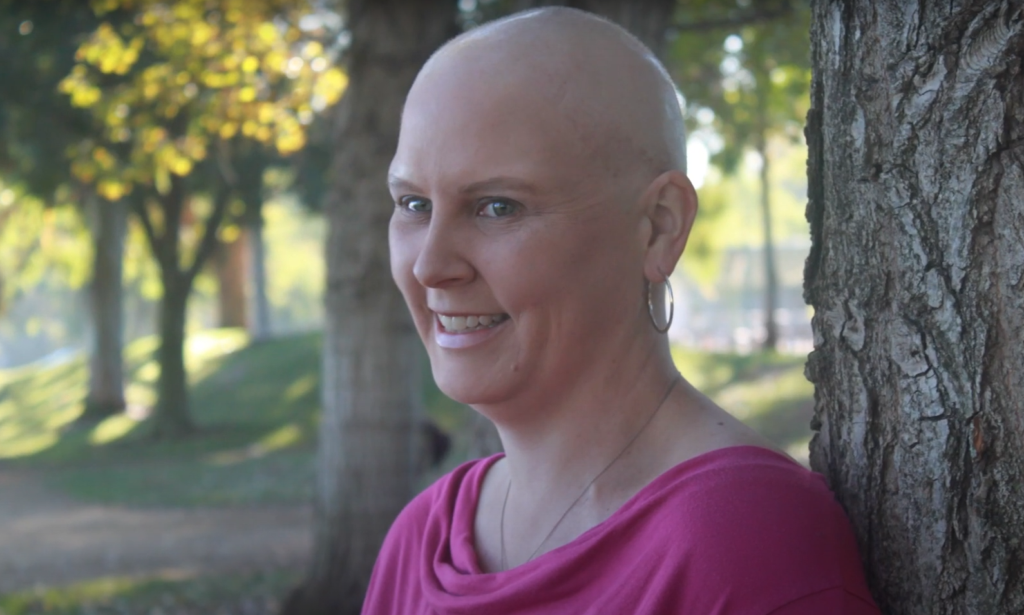
During the documentary unit, we also had the privilege of working with Oren Shachal, Anne’s husband. Oren has always been there to support his wife and his family, even through the toughest of times. Oren truly demonstrates how blood is the strongest of ties.
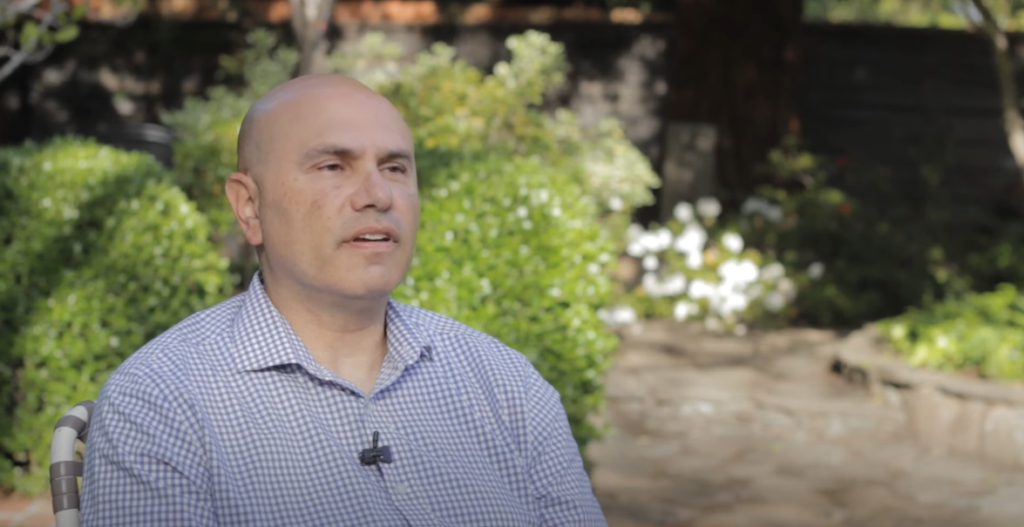
Eilish Bryn is a physical therapist who has worked at Lucile Packard Children’s Hospital for 22 years. When Anne was faced with cancer, Eilish would support the Shachal family by bringing them meals and offering a helping hand when possible. Eilish stands out as a great example for how we should support others during their time of need.
